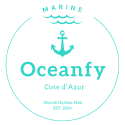Anti-fouling paints are essential for keeping a boat’s hull clean and efficient by preventing barnacle and algae buildup. However, many traditional paints contain biocides that harm marine life. Eco-friendly anti-fouling paints offer an alternative, but it’s important to understand their advantages and limitations.
We made a list of Eco-friendly anti-fouling paints.
Pros:
- Environmentally Safe for Marine Life 🌊
Eco-friendly paints are formulated without harmful biocides, reducing toxicity levels and protecting marine organisms and ecosystems. - Biodegradable and Non-Toxic Ingredients 🧪
These paints break down naturally over time, avoiding the buildup of toxic substances in marine environments. - Less Hull Damage 🔧
Eco-friendly paints often avoid harsh chemicals, which can reduce hull abrasion and corrosion over time, extending the life of the boat’s hull. - Supports Cleaner Waterways 🐟
Using eco-friendly paints means fewer pollutants in the water, contributing to healthier, more biodiverse marine habitats, especially in heavily trafficked boating areas. - Aligns with Environmental Regulations 📜
Many regions, including the EU, have implemented stricter environmental standards. Eco-friendly paints are compliant with these regulations, saving owners from potential fines or restrictions.
Cons:
- Higher Cost 💸
Eco-friendly anti-fouling paints tend to be more expensive due to the cost of eco-friendly ingredients and production processes. - May Require More Frequent Application 🎨
While effective, eco-friendly options may not last as long as traditional paints, requiring more frequent touch-ups or reapplications, which can be costly and time-consuming. - Effectiveness Can Vary ⚖️
Some eco-friendly paints are less effective in heavily fouling-prone waters, especially compared to biocide-based paints that aggressively repel marine organisms. - Availability and Accessibility 🛒
Eco-friendly options may not be available in all regions or marine supply stores, and owners may need to source them from specialty suppliers. - Application Can Be More Complex 🖌️
Some eco-friendly paints have specific application requirements, such as needing multiple coats or particular primers, adding to the time and effort needed for a successful application.
Conclusion:
Eco-friendly anti-fouling paints are a positive step toward sustainable boating, offering benefits for both the environment and hull protection. However, it’s important for boat owners to consider factors like cost, availability, and performance before making the switch. Choosing the right eco-friendly paint can support both a sustainable marine environment and a well-maintained boat.


Leave Your Comment